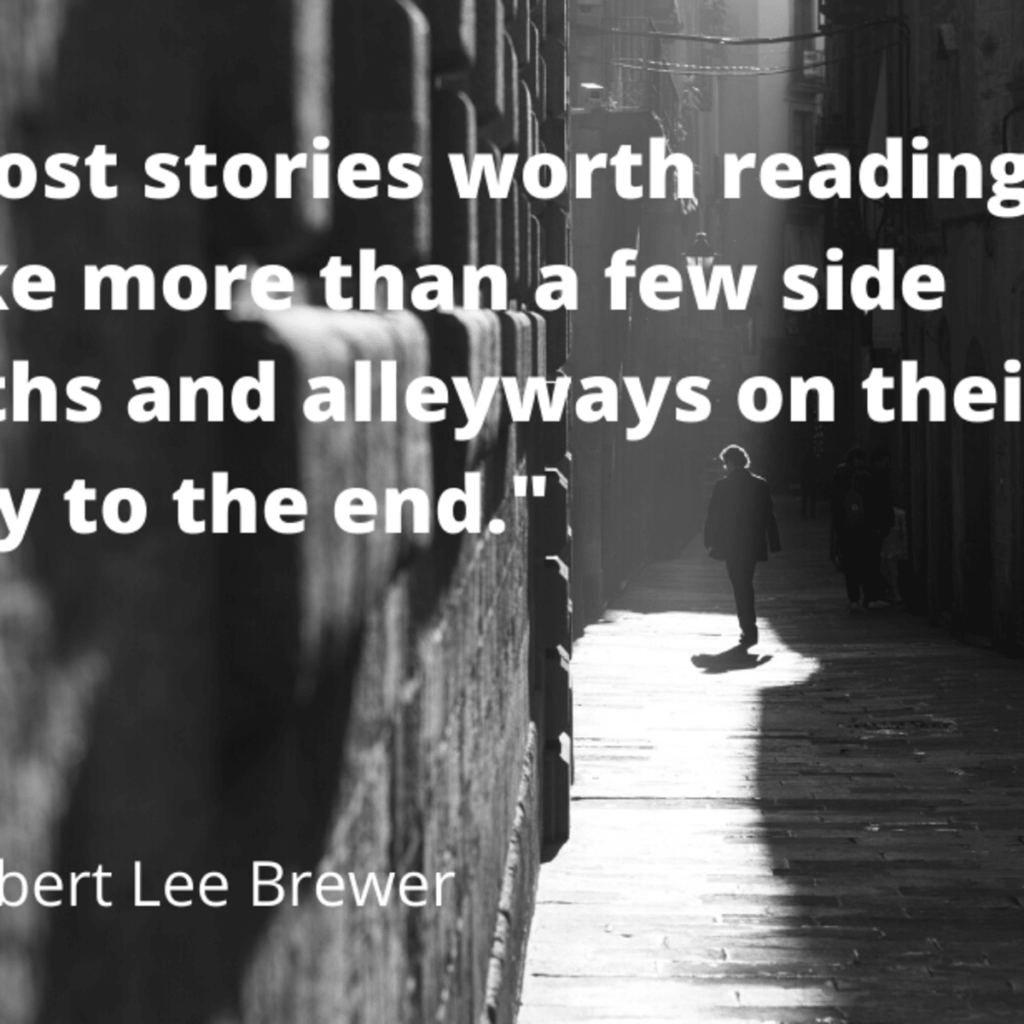Have you ever read a book or watched a movie that threw you for a loop with its unexpected plot twist? It’s like getting a surprise gift from the narrative gods! Well, in this article, we’re going to dive into the art of crafting these delightful surprises and explore how they can take your storytelling to the next level.
When it comes to creating plot twists, it’s all about keeping your audience on their toes. Instead of following a predictable path, you want to introduce elements that will leave them guessing and eagerly turning the pages or glued to the screen. Think about how you can subvert expectations and challenge your readers or viewers’ assumptions. Maybe you can introduce a character who initially seems trustworthy but turns out to have ulterior motives, or perhaps you can introduce a sudden change in the story’s setting or time period. By shaking things up and offering unexpected surprises, you’ll keep your audience engaged and craving more. In this article, we’ll explore some time-honored techniques and tricks used by master storytellers to create effective plot twists that will leave your audience in awe. So, get ready to dive deep into the world of crafting plot surprises and learn how to captivate your audience with the unexpected. can greatly enhance the reading experience for your audience. When done well, these unexpected turns can engage and captivate readers, keeping them on the edge of their seats until the very end. In this article, we will explore the importance of plot twists, the elements that make them successful, and various strategies for creating suspense and surprise in your writing.
Understanding the Importance of Plot Twists
Plot twists serve as the captivating moments in a story that challenge readers’ expectations and keep them engaged. They provide a refreshing jolt of surprise that can elevate a story from ordinary to extraordinary. A well-executed plot twist not only grabs the reader’s attention but also creates memorable and thought-provoking experiences.
Elements of a Successful Plot Surprise
To create an effective plot surprise, several key elements need to be considered. First and foremost, a plot twist should be unexpected, catching the reader off guard. However, it should also be believable within the context of the story. A twist that is too far-fetched or unrealistic can leave readers feeling disconnected and unsatisfied.
Timing is also crucial in crafting plot twists. Revealing the surprise at the right moment can heighten the overall impact and create a lasting impression. The surprise should occur at a pivotal point in the story, amplifying the emotional response and propelling the plot forward.

Creating Suspense and Foreshadowing
One of the most effective techniques to build anticipation and set the stage for a plot twist is through suspense and foreshadowing. By dropping subtle hints and clues throughout the narrative, you can prepare readers for a shocking revelation without giving away the surprise entirely.
Foreshadowing allows you to plant seeds of doubt or curiosity in the reader’s mind, making the eventual twist feel both surprising and logical. It creates an air of mystery and anticipation, keeping readers engaged as they eagerly seek answers to the questions you’ve posed.
Using Misdirection to Surprise Readers
Misdirection is a powerful tool in the writer’s arsenal. By directing readers’ attention towards one thing while subtly hinting at another, you can take them by surprise when the twist is finally revealed. This technique involves cleverly diverting the reader’s focus away from the true intentions or motivations of characters, leading them down a different path.
Through careful manipulation of information and subtle hints, you can mislead readers and make the eventual surprise even more satisfying. Misdirection can create a sense of controlled chaos, leaving readers guessing and eager to uncover the truth.

Utilizing Character Development for Plot Twists
Developing complex and multidimensional characters lays a solid foundation for impactful plot twists. By understanding your characters’ desires, fears, and hidden agendas, you can craft surprising turns of events that resonate with readers.
Characters with depth and complexity are more likely to act outside of readers’ expectations, making their actions and decisions all the more surprising. Furthermore, when a plot twist directly impacts a character’s motivations, it creates a deeper emotional connection between readers and the story.
Exploring Unexpected Motivations and Hidden Agendas
Unveiling unexpected motivations and hidden agendas can add depth to your plot and create surprising twists. By providing subtle hints and clues about characters’ true motivations, you can develop a sense of intrigue and mystery.
For example, a character who initially appears to be an enemy may be revealed to have been working undercover for the greater good all along. This revelation not only surprises readers but also adds layers of complexity to the story.

Crafting Red Herrings and Misleading Clues
Red herrings and misleading clues are devices used to divert readers’ attention from the true plot twist. These false leads create suspense and mystery, keeping readers engaged until the actual surprise is unveiled.
By strategically placing red herrings and misleading clues throughout the story, you can keep readers guessing and doubting their own conclusions. However, it is essential to ensure that these deceptive elements still make sense within the context of the story to avoid frustrating readers with completely arbitrary twists.
Introducing Unpredictable Plot Devices
Incorporating unpredictable plot devices can take the element of surprise to a whole new level. These devices challenge readers’ expectations and introduce unconventional elements, creating plot twists that are entirely unexpected.
For instance, introducing supernatural or science-fiction elements in an otherwise realistic setting can create plot twists that defy readers’ initial assumptions. This blending of genres surprises readers and keeps them engaged as they try to make sense of the unexpected.

Playing with Reader Expectations
By understanding genre conventions and narrative tropes, you can play with your readers’ expectations and subvert them to create exciting plot twists. For example, in a murder mystery, readers may expect the protagonist to solve the crime and bring the perpetrator to justice. However, a surprising twist could reveal that the protagonist was the culprit all along.
Subverting reader expectations not only adds excitement and intrigue but also forces readers to think critically about the story. It challenges their assumptions and encourages them to engage with the narrative in new and unexpected ways.
The Impact and Significance of a Well-Crafted Plot Surprise
A well-crafted plot surprise can leave a lasting impact on readers long after they’ve finished your story. It can spark discussions, inspire emotions, and create memorable reading experiences. A successful plot twist is not just a momentary surprise; it is a testament to the writer’s skill in keeping readers engaged and entertained.
In conclusion, crafting effective plot surprises requires careful planning and consideration. By understanding the importance of plot twists, utilizing elements such as suspense, foreshadowing, misdirection, and character development, and exploring unexpected motivations and unpredictable plot devices, you can create captivating and unforgettable plot surprises. So, unleash your imagination, experiment with unexpected twists, and keep your readers eagerly flipping through the pages of your story until the very end.


Comments are closed